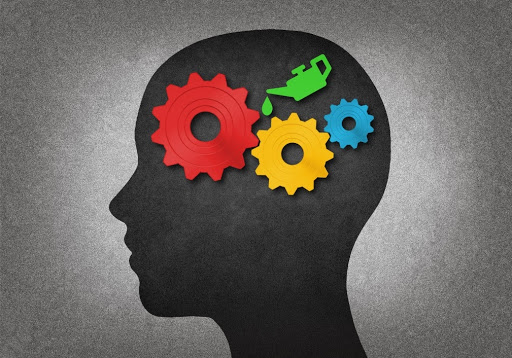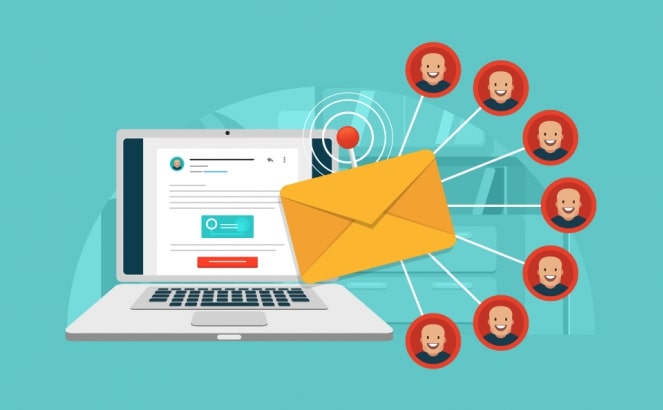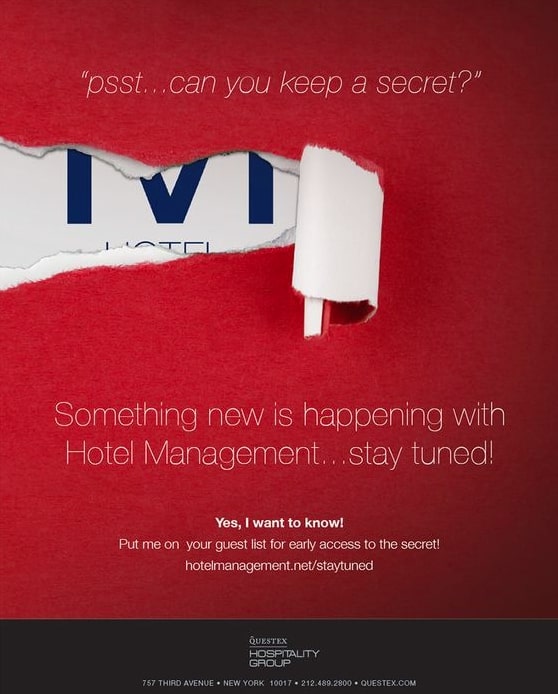12 Mental Triggers in Email Marketing and How to use it effectively
Let’s face the truth: Marketing is all about psychology.
Email marketing, well, is no different.
Anyone looking to build their email list and convert leads into customers needs to have a keen understanding of mental triggers.
If you don’t know what makes your prospects tick at the end of the day, how can you expect them to open your messages?
So, when it comes to email marketing, we have narrowed it down to 12 mental triggers. These mental triggers are about as old as marketing itself; nevertheless, they work beautifully when applied to your next email campaigns.
Buckle up and get started right now!
What are mental triggers?
Before jumping into the definition of mental triggers, imagine that you’re thinking about making a purchase.
You haven’t decided yet, but you’re seriously considering buying a specific pair of sneakers. During the research on the Internet, you see an alert: “Last units!” In order not to miss this valuable opportunity, you decide to buy…
Now, let’s take another example. This time, you go to the supermarket near your house and come across a notice: a flavor of soda you’ve never tasted in your life. Out of curiosity, you decide to buy.
In both cases, brands used mental triggers to get you to close the deal.
So, what are mental triggers, anyway?
Mental triggers, in psychological terms, are essentially cognitive stimuli and related to your senses. They can be activated to arouse emotions, start a decision-making process, and attract customers.

To make it easy to understand, mental triggers involve decisions that our brain makes “on autopilot” to avoid the exhaustion in the face of so many choices. The human brain produces more than 35,000 decisions every day, and most of them are related to emotions. This is exactly where this persuasion technique’s potential appears: arousing emotions in people so that they make a decision you want.
Using mental triggers for action calls and in your marketing campaigns can be beneficial to customers as well as to your business. Nevertheless, keep in mind that this technique is not a magic formula to manipulate people to do whatever you want.
Related posts:
- Klaviyo vs Mailchimp: Who is the best Email Marketing
- Constant Contact vs Mailchimp
- 16 Proven Tips to Increase Your Email Open Rate
Why should we use Mental Triggers in Email Marketing?
Email marketers are competing with a lot of noise to stand out from the crowd. Your ideal consumers are likely consuming a great deal of content throughout their day, and eventually, it’s easy to be buried amongst all the noise.
What makes you different? The answer is: the powerful mental triggers you can create in your email marketing campaigns.
As a matter of fact, mental triggers in email marketing campaigns can:
Make a great first impression
The first impression forms in a matter of seconds. The same goes for the first impression of an email marketing campaign. Let’s say email A lists the skills customers will learn if they take an online course, while email B talks about who they’ll be after taking the course.
Email A is attempting to prove its worth with facts and stats, which appeals to the brain’s rational side. Simultaneously, email B taps into the emotion of hope and inspiration by focusing on the transformation learners will experience. As stated above, emotions often come first and are more important in marketing than we ever thought, and we’re betting that email B would win in a throwdown.
Make your content shareable
Think about the recent time you opened your email message. What caused you to stay longer, read it, and even share it with others? Was it exactly something that made you giggle with happiness? Or cringle with despair or sadness? Fume with frustration or anger?

We tend to share content that makes us feel something. So, if your email is crafted to incite an emotional pull, chances are your audience is compelled to share it.
Inspire action
Just like the content example above, mental triggers incite action. Whether it is a share or a double tap, a reply, or a subscribe button, our mental centers are what drive our actions and decisions more than anything else. If you really want someone to take action, make sure you are tying that action to a mental trigger.
List of 12 Mental Triggers in Email Marketing
It goes without saying that you desire to write emails that convert. This can be a big challenge for any marketer. Assuming that you’ve already built a targeted list, segmented it, and set up workflows that appeal to each contact at the right step of their journey, the only thing left to turn you into a rockstar email marketer is learning to use mental triggers.
And this list of 12 following mental triggers can help you rock your email marketing campaigns.
1. Authority
Have you wondered why companies have to pay a lot to get celebrities and other well-known figures in their commercials? The idea is actually to leverage the sense of authority created by that figure and awaken thoughts like “If such a person recommends it, it must be really good,” for example.
One often-overlooked way of establishing authority is showcasing your products or services’ popularity by curating them in your email marketing. The logic is simple: consumers tend to believe that if a product is particularly popular, it must be for a good reason!
Establishing authority can be done in different ways in your emails, such as:
- Promote your bestsellers
- Mention customer favorites
- Collaborate with other partners
- Get celebrity endorsement
- Add media mentions to your emails (blogs, local newspapers, or podcasts)
2. Novelty
Many scientists have proven that exposure to something new and unknown increases dopamine levels in the brain, which is related directly to your concentration and motivation levels.
In addition to stimulating the interest, the psychological trigger of novelty leads people to action, once they want to be the first to try out the new product. That’s why big brands in the market, such as Apple and Microsoft invest so much in launches.
So, write 6 to 10 words in the email subject line, announcing that your company has something new. By doing that, you can “hook” more attention due to the fact that the audience believes it is something never before seen in the market.
3. Reciprocity
Reciprocity is one of the basic principles of human psychology: when someone gives you something, you get a sense of obligation to do something for them in return. That’s why it’s essential to add value to customers before thinking about the possible profit.
No matter what you’re asking your prospects to do (click a link, sign up, etc.) you should offer some sort of “gift” in return. It can be in the form of a discount, a free download, a free webinar, free shipping, and so on. Remember, whatever you choose to give needs to be seen as valuable to truly be effective.

Bringing reciprocity into your emails can be implemented by:
- Offering your readers something for free before you ask them for anything in return
- Sharing free resources such as blogs, guides, helpful infographics
- Offering an exclusive free trial or special discount.
4. Trust
Trust is undoubtedly one of the most potent triggers when it comes to any marketing activity. If people don’t trust you, they will not buy from you. It is that simple.
Your email list and newsletter are an awesome chance for you to build trust. A one-time contact generally has a hard time to earn trust, but a long-term relationship can build trust over time. Just make sure to give accurate information and sound advice to make your readers trust in what you say in your emails.
Perhaps trust does not rank the highest converting mental trigger, but its lack will certainly make you lose a ton of money.
5. Community
As humans, we have a need for connection, and to be a part of a community. From the beginning of our species, we organized ourselves into groups to find food, fight against enemies, and develop our personalities.
Communities don’t just make us feel secure and happy; they actually motivate us to take action. However, it isn’t an easy task to increase online community engagement. Email is an effective way to keep your community top of mind and build quality user participation.

Emails enable companies to cater messaging to the specific interests of their audience, which eventually allows them to deliver a more valuable user experience. For example, many organizations send out regular emails highlighting community stats and health, including the number of questions asked and the top users with the most reputation points. This generates a level of transparency among community members and encourages them to participate more frequently.
6. Curiosity
Whenever there is a gap between what we know and what we desire to know, humans have a strong aspiration to fill that gap. This phenomenon feels like a mental itch on the brain, and we’ll do what it takes to scratch that itch. And that is all about curiosity.
Curiosity is a trigger that will make people look for more information about your product or service, watch your video, open your emails, and subscribe to a newsletter. It doesn’t only inspire action; it also lights up parts of your brain associated with pleasure. Hence, using mental triggers that arouse your customer’s curiosity helps keep them interested in what you say and do.
To apply this mental trigger successfully, your subscribers need to stumble upon a thought-provoking headline. It generally starts with the email headlines, so make sure that you keep your email open rates high by thoroughly testing and optimizing your titles. If you manage to create enough curiosity, you can expect people to search for more and more, up to the point where they reach your products.
For instance, use a curiosity-driven headline, such as “Revealed: 7 Secrets of the Top Lead Generation Companies in the World” or “5 Little-Known Ways to Stand Out on Instagram.”
7. Anticipation
Let’s think about an Apple product launch once again. Whenever there’s a new product coming out, people line up in front of Apple stores and camp out - sometimes for days. Why do they do it?
The answer is simple - Apple manages to build anticipation for its new products. People can’t wait one more day, and everybody wants to have the latest one right now - even if they’re expensive!
Anticipation is considered the first of four stages of happiness. When consumers look forward to something, they feel good about it and may even share their anticipation with other people. If you want to build anticipation in your emails, you need to use something as bait to catch your reader’s attention and intrigue them into exploring more.
First, it’s essential to create subject lines that pique your reader’s interest and compel them to read on. This could be a question, command, or mysterious statement that arouses their anticipation and leaves them in suspense.
Next, think about the main body of the text in your email. You should keep this short and sweet. The goal is to make your subscribers feel anticipated about what is coming and compelled to learn more.

Shroud your email in the air of anticipation, but let readers know that their patience will be rewarded soon - after all, good things come to those who wait (and subscribe to your mailing list!)
8. Social Proof
Social proof is a mental trigger where people tend to “follow the flock.” If others are doing something, you’re more likely to do the same thing.
Think about it, before deciding to eat in a new restaurant, how many times do you seek reviews first to see what other customers are saying? The same concept applies to your business! It comes as no surprise that up to 90% of consumers read online reviews before visiting a business.
By showing off positive feedback from previously satisfied customers, you prove that you are the real deal versus a disposable company. So, how can you incorporate social proof in your emails?
- Share reviews. No matter if it is something as simple as a 5-star rating or a lengthy written review, establish your credibility by showing that you have satisfied customers.
- Share numbers or stats. Show them how many customers you have, how many new signups you had last month, etc.
- Do you have any awards? Remember to use these to your advantage. Creatively incorporate these into your email template.
- Name drop. Have you worked with some major brands? Add their logo to your email.
In reality, a lot of apps in the market can help you deal with this perfectly, try out Proofo - Social Proof, an awesome app for Shopify merchants to experience.
9. Events and Ritual
Have you ever asked yourself why Oreo is the world’s top-selling cookie?
Well, the chocolate wafer and creamy inside have a lot to do with it, but so does the ritual of eating an Oreo. No matter where you are, people just seem to know the right way to eat an Oreo: first, you twist it, lick it, and finally dunk it in milk.
Frequent events and rituals involve behaviors that a person performs regularly, every day (e.g., drinking coffee), or once a year (e.g., Thanksgiving dinner). As consumers, we tend to make brands part of our own rituals or daily routines. Marketers know this, and they depend on it, too.
So, to utilize this mental trigger in your email marketing campaigns, you need to explore your brand’s elements that lend themselves to becoming ritualized. Besides, how might you make your product or service part of the daily lives of your consumers? Is it even possible?
Find answers to these questions by yourself and craft these things in your emails wisely!
10. Scarcity
The scarcity mental trigger creates value to an item through its limitation, which happens because our subconscious often associates the difficulty of purchasing an object with how valuable it is.
Amazon and Booking often apply this trigger. Notice when you are making a purchase on these platforms, you can see how many items they have left and, in some cases, the number of people browsing the page at the moment. This type of information urges visitors to complete the purchase.

There are, in fact, many ways to induce a feeling of scarcity in your email marketing campaigns, and some of them include:
- The product/ service will only be available for a couple of days, and after that, you won’t be able to purchase it
- Low price will only be available for a couple of days, and go up after that
- An exclusive offer that includes some high-priced bonuses
- A restricted number of the product/ service is available (e.g., limited seats in a class or course)
Scarcity has tremendous power to make customers buy NOW instead of postponing their purchasing decision and ending up forgetting all about you. However, scarcity needs to be real. If your audience notices this mental trigger very often, it loses its effectiveness as a sales argument.
11. Likeability
We would rather spend money on people we like, and of course, hate having to write a check for people we dislike. As common sense, we also rather turn to people we love if we need help.
So, one way to make your business likable is to show who you are. You’re not a faceless business, you are a person. Sometimes even a friendly image can make your brand more “human”, likable, and increase conversions quickly.
You can start by creating an email signature to make this mental trigger effectively work.
12. Fear of missing out (FOMO)
Humans typically have a strong aversion to loss; our Fear of missing out (FOMO) triggers us to take action. FOMO describes the general anxiety or social fear that comes with the idea of missing out on an experience, event, or occasion.
For example, if you mention “A special 40% discount only for you” in your email, this might be an appealing offer, but it won’t necessarily elicit an instant response. Instead, you write “Flash discount of 40% only for you - expires in 1 hour,” there is a greater probability of receiving an immediate response.
This is a trigger that retail E-commerce sites use quite frequently. They usually add a countdown timer to their emails to create a sense of urgency. This time limit means the difference between them considering your product/ service and making a decision right away.
The bottom line
One of the most outstanding literary voices in American history - Maya Angelou, used to say, “I’ve learned that people will forget what you said, people will forget what you did, but people will never forget how you made them feel.” That’s also why marketers invest a lot of resources into creating content that inspires, entertains, educates, and engages people on a deep level.
Keep in mind that email marketing, or any marketing activities is a science and an art. While data can help you make good decisions, it’s not enough: you must understand customers’ mindset to create high-impact campaigns. And we hope our list of 12 mental triggers is a great choice to start!
AVADA Email Marketing
Send emails to the right person at the right time
New Posts







